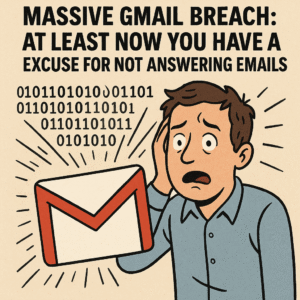Introduction
Snapchat is one of the most popular apps among teens. It’s fast, fun, and full of filters. But behind the streaks and silly lenses, there’s a darker side—and it’s serious.
Snap Inc. has built features that keep users hooked. But those same features are exposing kids to predators, drugs, harassment, and more. This post breaks down what’s really happening inside Snapchat and why the tech world—and the public—should care.
1. How Snapchat Became Addictive by Design
Snapchat’s core features aren’t just fun. They’re sticky by design.
- Snapstreaks push teens to message friends daily or risk losing the streak.
- Disappearing messages encourage users to send riskier content.
- Push notifications nudge users to stay on the app longer.
These features train young users to constantly check the app. It’s behavioral psychology, not just social networking. And the result? Many kids feel they can’t put it down—even when they want to.
2. The Platform’s Hidden Role in Drug and Weapon Sales
Snapchat isn’t just about selfies anymore. It’s also being used to sell illegal substances and firearms.
Because messages vanish quickly, it’s hard to track what’s happening. Dealers know this. Some use emojis to advertise drugs. Some use stories to offer guns.
Even after multiple internal reports flagged this behavior, the company didn’t act fast. This delay let the problem grow. The damage is now visible, and in some cases, deadly.
3. A Growing Crisis: Child Exploitation and Sextortion
Predators use Snapchat’s tools to find and exploit children.
- “Quick Add” lets strangers appear in a teen’s friend suggestions.
- “Snap Map” reveals a user’s location to others.
- Disappearing snaps make it easier to pressure kids into sending explicit content.
There are confirmed reports of predators using these tools to commit crimes. And while Snap says it’s cracking down, there’s still little transparency about what’s actually being done.
4. Cyberbullying Is Worse When Messages Vanish
Cyberbullying is already tough to fight. Snapchat makes it harder.
Because messages disappear, victims can’t prove what happened. Reporting abuse becomes nearly impossible. Plus, the platform lacks effective moderation.
This gives bullies room to act without fear of being caught. Teens end up feeling isolated, helpless, and afraid to speak out.
5. Snap Knew—But Didn’t Act
Internal documents show Snap Inc. was aware of these harms. Executives discussed the problems. Reports were written. Concerns were raised.
But when it came time to make changes? They didn’t move.
The company focused on growth, user time-on-app, and metrics that look good to investors. Safety, especially for minors, came second—or not at all.
6. Why This Matters to the Tech Industry
If you work in tech—whether in product, security, or design—this is your wake-up call.
We often say we’re building for the user. But who is that user? If your platform is popular with teens, safety has to come first. Engagement metrics can’t come at the cost of harm.
This isn’t just a Snapchat problem. It’s a blueprint for what not to do.
7. What Parents and Professionals Can Do Now
You don’t need to wait for lawmakers to act. Here’s what you can do right now:
- Parents: Check privacy settings. Talk to your kids about disappearing messages.
- Educators: Raise awareness. Teach digital literacy and consent.
- IT Professionals: Advocate for ethical UX. Build features that put safety first.
- Consultants: Work with companies to audit risky designs and recommend safer alternatives.
Conclusion
Snapchat didn’t invent social harm. But it scaled it with speed, design, and silence. As tech professionals, we have a responsibility to call this out.
Building apps for teens? Think beyond engagement. Think long-term safety. Don’t wait for tragedy to drive change.
Call to Action
If you work in product, UX, or IT, speak up. If you consult with tech teams, raise the flag early. And if you’re a parent or educator, make safety part of every tech conversation.
Need help analyzing the digital risks in your org? Contact us at Digital Solutions of Chillicothe. We help companies build safer, smarter platforms from the ground up.
Citations
- After Babel – Industrial Scale Snapchat by Jonathan Haidt
- Stromberg, Eric. “Inflection Points: Snapchat’s Design for Addiction.” Medium.
- Wired, 2023. “Snapchat’s Role in the Fentanyl Crisis.”
- National Center for Missing & Exploited Children, 2022 Reports.
- The Atlantic, “Snapchat and Sextortion: How the App Fails to Protect Minors.”



